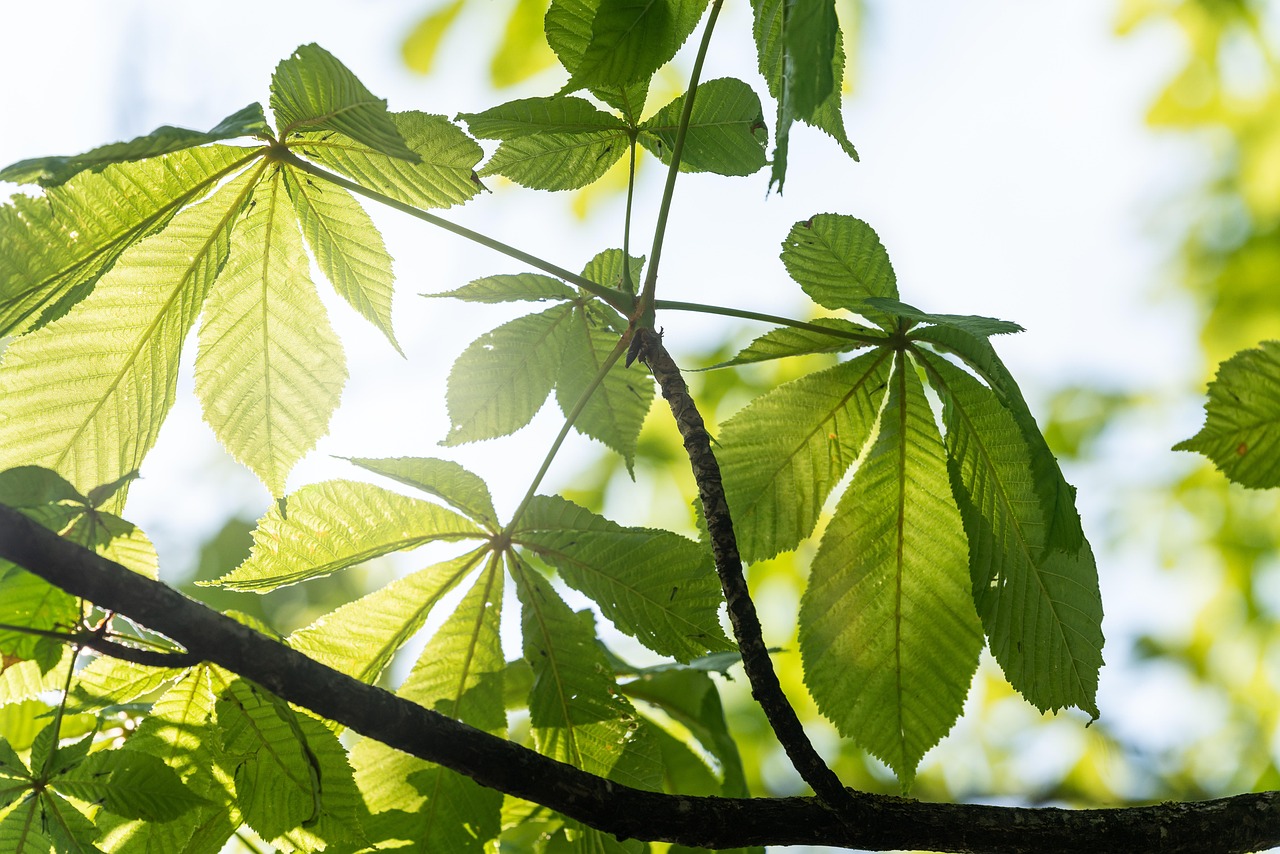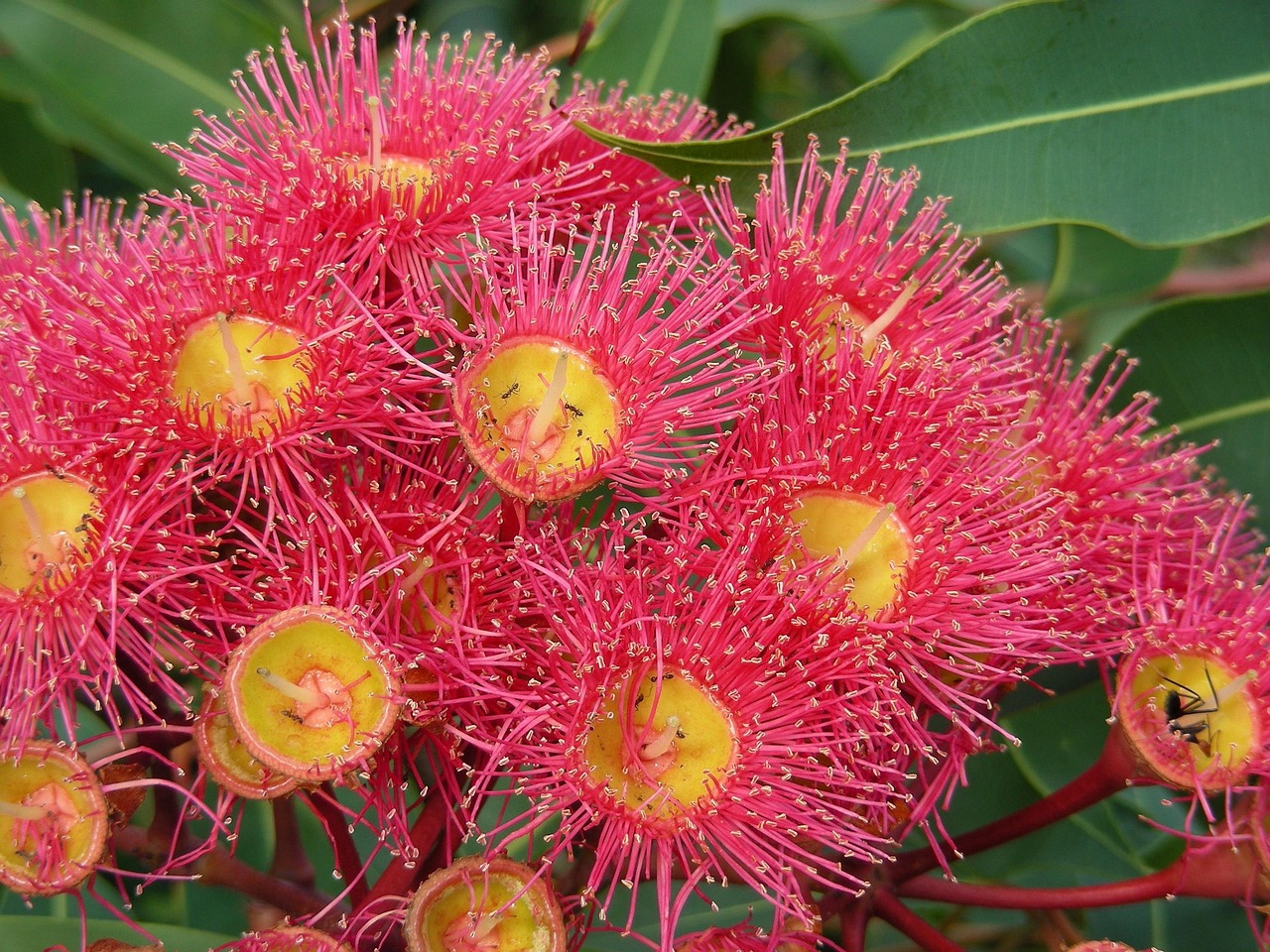The growth rate of gum trees in Australian landscapes and forests varies by species and environmental conditions. Generally, many gum trees can grow between 1 to 3 meters per year, with some species reaching maturity in as little as 10 to 15 years under optimal conditions.
Gum trees, or Eucalyptus species, are iconic to the Australian environment. They are known for their distinctive bark, aromatic leaves, and ability to thrive in diverse climates. Their adaptability allows them to flourish in various soil types and weather conditions across Australia. This makes them a significant component of both natural ecosystems and urban environments.

The growth rates of gum trees are influenced by several factors, including soil quality, water availability, temperature, and competition from other vegetation. Understanding the growth rates of gum trees is essential for land management, forestry practices, and conservation efforts. It helps in planning reforestation projects and maintaining healthy ecosystems.
Factors Affecting Gum Tree Growth Rate
Several factors contribute to the growth rates of gum trees. These can be summarized as follows:
- Species Type: Different species of gum trees exhibit varying growth rates. For instance, the Eucalyptus globulus (Tasmanian Blue Gum) is known for its fast growth compared to other species.
- Soil Quality: Nutrient-rich soils support faster growth. Poor soil quality can stunt development and lower growth rates.
- Water Availability: Gum trees require adequate water for optimal growth. Drought conditions can slow down their growth significantly.
- Climate Conditions: Temperature and rainfall patterns directly impact growth rates. Warm climates with regular rainfall promote faster growth.
- Competition: The presence of other plants can affect the growth of gum trees. Strong competition for resources may hinder their development.
Additionally, human activities such as land clearing and urban development can impact the growth rates of gum trees. When forests are cleared, the remaining trees may experience less competition but also suffer from altered environmental conditions.

The following table outlines some common species of gum trees along with their average growth rates and preferred conditions:
| Species | Average Growth Rate (meters/year) | Preferred Conditions |
|---|---|---|
| Eucalyptus globulus | 2-3 | Nutrient-rich soils, moderate rainfall |
| Eucalyptus camaldulensis | 1-2 | Diverse soil types, tolerates drought |
| Eucalyptus regnans | 2-3 | Moist, fertile soils, high rainfall areas |
| Eucalyptus tereticornis | 1-2 | Well-drained soils, good sunlight |
The table highlights the diversity among gum tree species in terms of growth rates and preferred environmental conditions. This diversity allows for a rich tapestry of ecosystems within Australian landscapes.
In addition to their rapid growth rates, gum trees play a crucial role in Australia’s ecology. They provide habitat for numerous species of wildlife, including koalas and various birds. Protecting and managing these trees is essential for maintaining biodiversity across the continent.

Overall, understanding the growth rates of gum trees is vital for effective landscape management. This knowledge aids in promoting sustainable practices that enhance both forest health and productivity. As climate change continues to affect environmental conditions, ongoing research into gum tree growth will be critical for future conservation efforts.
Gum Tree Varieties and Their Unique Growth Characteristics
Australia is home to over 700 species of gum trees, each with its distinct growth characteristics and ecological roles. Understanding the differences among these species can help in selecting the right trees for specific landscapes and purposes. This section explores some of the most common gum tree species, highlighting their unique traits, growth rates, and preferred habitats.
Eucalyptus globulus
The Tasmanian Blue Gum, or Eucalyptus globulus, is one of the fastest-growing gum trees. It can reach heights of up to 70 meters and is known for its straight trunk and smooth bark. This species thrives in coastal regions and temperate climates, preferring well-drained soils. Its rapid growth rate makes it a popular choice for timber production.

- Growth Rate: 2-3 meters per year
- Height: Up to 70 meters
- Habitat: Coastal regions, temperate climates
- Uses: Timber, essential oils, and reforestation
Eucalyptus camaldulensis
The River Red Gum, or Eucalyptus camaldulensis, is commonly found along riverbanks and floodplains. It is known for its resilience to flooding and drought. This species can grow to about 30-40 meters in height and prefers a variety of soil types. Its adaptability makes it a vital species for environmental restoration projects.
- Growth Rate: 1-2 meters per year
- Height: 30-40 meters
- Habitat: Riverbanks, floodplains
- Uses: Habitat for wildlife, erosion control
Eucalyptus regnans
The Mountain Ash, or Eucalyptus regnans, is one of the tallest flowering plants in the world. It can grow up to 100 meters tall in optimal conditions. This species thrives in moist, fertile soils and is predominantly found in the forests of Victoria and Tasmania. Its growth rate can be impressive, making it an important tree for timber production.
- Growth Rate: 2-3 meters per year
- Height: Up to 100 meters
- Habitat: Cool, moist forests
- Uses: Timber, carbon sequestration
Eucalyptus tereticornis
The Forest Red Gum, or Eucalyptus tereticornis, is a medium to large tree that can reach heights of up to 40 meters. It is commonly found in woodlands and open forests. This species grows well in well-drained soils and tolerates a range of environmental conditions. It is often used for timber and in landscaping projects.
- Growth Rate: 1-2 meters per year
- Height: Up to 40 meters
- Habitat: Woodlands, open forests
- Uses: Timber, shade trees in urban areas
The Role of Gum Trees in Ecosystems
Gum trees play an integral role in Australian ecosystems. They provide habitats for numerous species of wildlife, including birds, mammals, and insects. The unique structure of gum trees contributes to biodiversity and offers various ecological benefits.
Some key roles of gum trees in their ecosystems include:
- Habitat Creation: Gum trees serve as vital habitats for many native species. Birds such as cockatoos and parrots depend on them for food and nesting sites.
- Soil Improvement: The leaf litter from gum trees enriches the soil, promoting the growth of other plants and improving overall soil health.
- Erosion Control: The root systems of gum trees help stabilize the soil, reducing erosion along riverbanks and hillsides.
- Carbon Sequestration: Gum trees absorb carbon dioxide from the atmosphere, playing a role in mitigating climate change. Their rapid growth rates enhance their ability to sequester carbon.
The complex interactions between gum trees and other elements within their ecosystems highlight their importance beyond just being a source of timber or aesthetic value. Protecting these trees is crucial for maintaining ecological balance and supporting biodiversity across Australia.
Challenges Facing Gum Tree Growth
Despite their resilience, gum trees face several challenges that can affect their growth rates and overall health. Some of these challenges include climate change, habitat loss, invasive species, and pests.
- Climate Change: Altered rainfall patterns and increased temperatures can impact gum tree growth and survival rates.
- Habitat Loss: Urban development and land clearing diminish available habitats for gum trees, affecting their distribution.
- Invasive Species: Non-native plants can compete with gum trees for resources, hindering their growth.
- Pests and Diseases: Insects like the eucalyptus borer pose threats to the health of gum trees by damaging their structure.
Tackling these challenges requires concerted efforts from land managers, conservationists, and communities to ensure the sustainability of gum tree populations across Australian landscapes.
Management Practices for Enhancing Gum Tree Growth
To promote healthy growth and maximize the potential of gum trees in Australian landscapes, effective management practices are essential. These practices not only support the trees’ growth rates but also enhance biodiversity and ecosystem resilience. Below, we explore various strategies that land managers and communities can implement to achieve these goals.
Site Selection and Preparation
Choosing the right location for planting gum trees is critical for their growth. Factors such as soil type, drainage, and sunlight availability should be considered during site selection. Proper site preparation can significantly improve the establishment success of gum trees.
- Soil Testing: Conduct soil tests to determine nutrient levels and pH. This information helps in selecting appropriate species and amendments.
- Clearing and Tilling: Remove competing vegetation and till the soil to improve aeration and drainage. This prepares a suitable environment for seedlings.
- Mulching: Apply organic mulch around newly planted trees to retain moisture, suppress weeds, and enhance soil fertility.
Water Management
Water availability is a significant factor influencing the growth rates of gum trees. Proper water management practices can promote healthy growth, especially during the establishment phase.
- Irrigation: In areas with insufficient rainfall, consider implementing a controlled irrigation system to ensure young trees receive adequate moisture.
- Watering Schedule: Establish a regular watering schedule during dry spells. Monitor soil moisture levels to avoid overwatering or drought stress.
- Rainwater Harvesting: Capture and store rainwater to supplement irrigation needs. This practice promotes sustainability and reduces reliance on groundwater.
Pest and Disease Management
Monitoring and managing pests and diseases is crucial for maintaining the health of gum trees. Early detection can prevent significant damage and loss of growth potential.
- Regular Inspections: Conduct regular checks for signs of pests or disease, such as wilting leaves, discoloration, or unusual growths.
- Integrated Pest Management (IPM): Use a combination of biological, cultural, and chemical controls to manage pest populations effectively while minimizing environmental impact.
- Native Predators: Encourage the presence of natural predators that can help control pest populations. For instance, birds and beneficial insects play essential roles in pest management.
The Role of Community Engagement
Community involvement is vital for the successful management of gum tree populations. Engaging local communities fosters a sense of stewardship and responsibility towards the environment.
Educational Programs
Implementing educational initiatives can raise awareness about the importance of gum trees and their ecosystems. These programs can cover various topics such as:
- Identification: Teaching community members how to identify different gum tree species helps in understanding their unique requirements.
- Ecosystem Services: Highlighting the benefits that gum trees provide, including habitat creation and carbon sequestration, encourages conservation efforts.
- Sustainable Practices: Educating the public about sustainable land management practices ensures that communities actively contribute to the health of local ecosystems.
Volunteer Programs
Engaging volunteers in planting and maintaining gum tree populations can lead to positive environmental outcomes while fostering community spirit. Volunteer programs can include:
- Tree Planting Events: Organize community tree planting days to increase gum tree cover in local areas.
- Cleansing Initiatives: Encourage community members to participate in clean-up activities that protect gum tree habitats from litter and pollution.
- Monitoring Projects: Involve volunteers in monitoring tree health and growth rates, contributing valuable data for conservation efforts.
The Future of Gum Trees in Australian Landscapes
The future sustainability of gum trees in Australian landscapes hinges on proactive management and conservation efforts. Continued research into their growth patterns, ecological roles, and responses to environmental changes will aid in developing effective strategies for preserving these vital trees.
A collaborative approach involving scientists, land managers, government agencies, and local communities will enhance the understanding of gum tree dynamics. By working together, stakeholders can address challenges, implement best practices, and ensure that gum trees continue to thrive in Australia’s diverse ecosystems.
As Australia faces ongoing changes due to climate shifts and human activities, adapting management practices will be essential for maintaining healthy gum tree populations and their integral role in the landscape. The effort to protect these trees ultimately contributes to preserving Australia’s unique natural heritage for future generations.
Future Research Directions
To further enhance the understanding of gum tree growth rates and their ecological significance, ongoing research is crucial. Future studies should focus on several key areas:
- Climate Resilience: Research should investigate how different species of gum trees respond to changing climate conditions. Understanding their adaptability will be essential for selecting the right species for reforestation efforts.
- Genetic Diversity: Examining the genetic diversity within gum tree populations can provide insights into their resilience against pests, diseases, and environmental changes. Conservation of this diversity is vital for sustaining healthy populations.
- Ecosystem Interactions: Studying the interactions between gum trees and other flora and fauna will enable a better understanding of their role in supporting biodiversity. This knowledge is essential for effective ecosystem management.
- Growth Modeling: Developing predictive models that take into account various environmental factors can help forecast growth rates under different scenarios. Such models can inform land management decisions and conservation strategies.
Partnerships between universities, government agencies, and non-profit organizations can facilitate this research. Collaborative efforts will ensure that findings are disseminated widely, translating into practical applications for land management and conservation.
Community Involvement and Education
Community involvement plays a pivotal role in the success of gum tree conservation efforts. Educational initiatives can empower individuals and local groups to take action in their environments. Effective outreach programs could include:
- Workshops: Hosting workshops that teach residents about gum tree identification, care, and the importance of these trees in the ecosystem can foster appreciation and stewardship.
- School Programs: Engaging schools in tree planting and monitoring projects can instill a sense of responsibility in young people while contributing to local environmental efforts.
- Community Events: Organizing community tree planting days or clean-up events can bring people together while promoting the health of local ecosystems.
By building a community around gum tree conservation, individuals can contribute to broader efforts that benefit both the environment and society as a whole.
Final Thoughts
Gum trees are a vital component of Australia’s natural heritage, playing crucial roles in ecosystems across diverse landscapes. Their impressive growth rates, adaptability, and ecological significance make them essential for both environmental sustainability and economic resources. However, challenges such as climate change, habitat loss, and invasive species threaten their future viability.
Through proactive management strategies, community engagement, and continued research, we can enhance the growth and sustainability of gum trees. By fostering a collaborative approach that includes scientists, land managers, and local communities, we can address the challenges these trees face while ensuring they thrive for generations to come.
The commitment to preserving gum trees reflects a broader dedication to maintaining Australia’s unique biodiversity and natural landscapes. As we move forward, it is essential to recognize the interconnectedness of all living things within these ecosystems. Protecting gum trees not only benefits the trees themselves but also supports the myriad of species that rely on them for survival.
In conclusion, the journey towards sustainable gum tree management is one that requires our collective effort. By investing in research, education, and community initiatives, we can work together to secure a future where gum trees continue to flourish as pillars of Australian landscapes and forests.
